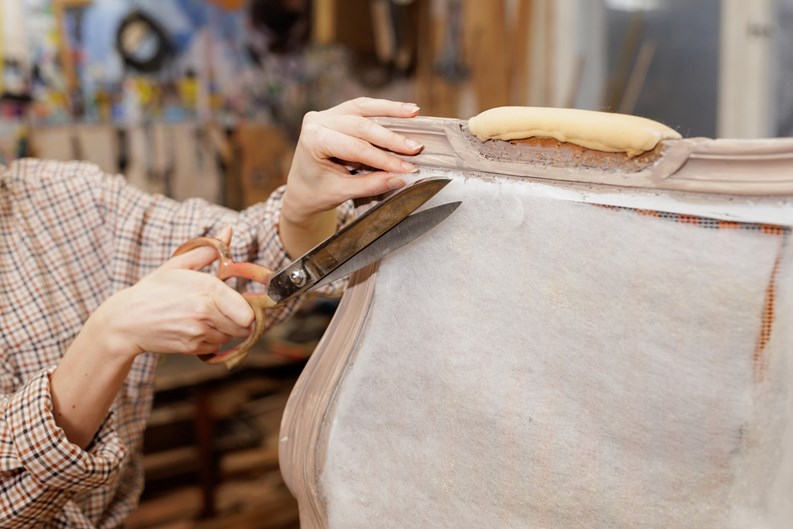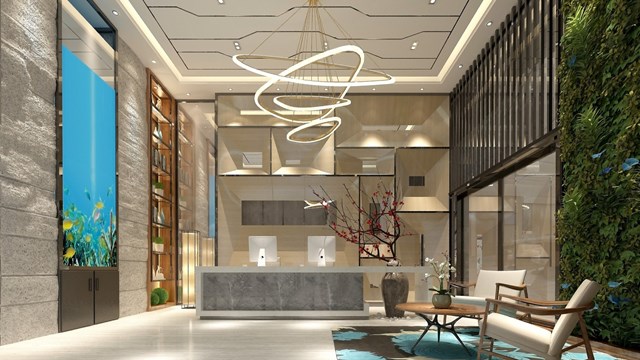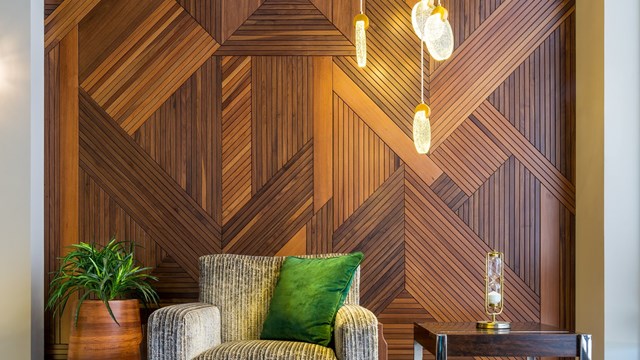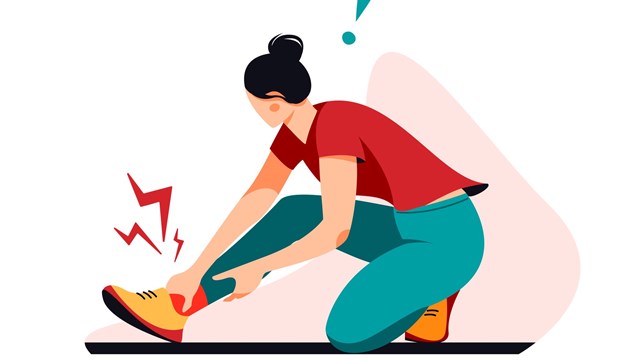Keeping lobby spaces attractive and up-to-date often requires more than a fresh coat of paint and seasonal floral arrangements. One key component is the lobby décor; the furniture and furnishings that fill out the space and make it appealing to residents and prospective buyers alike. Marilyn Sygrove is a Manhattan-based interior designer known as the ‘Lobby Queen’, and the principal at Sygrove Associates Design Group. She recently shared some tips on keeping your lobby furniture looking its best over the long haul.
CooperatorNews: What are the benefits and drawbacks of reupholstering lobby furniture vs. buying new?
Marilyn Sygrove: “The truth is that the benefit of reupholstering is often more emotional than anything. If a piece is an antique, or one-of-a-kind, it’s irreplaceable—but that’s rare, if not non-existent, when it comes to lobby furniture. Reusing, restoring, repurposing, and salvaging are typical terms used to justify the cost of reupholstering. We find that purchasing new pieces provides more choices, both aesthetically and with respect to cost. For a lobby ‘refresh’, having pieces that are different from what was there before may be enough to give a lobby a facelift.”
CN: Beyond cost, what other considerations are there in deciding whether to refurbish or just replace lobby furnishings?
MS: “Sadly, cost is almost always the major consideration, but wrongly. It’s actually less costly to purchase new and donate the old, if it’s in usable condition. Furthermore, depending on the construction of the individual piece of furniture, reupholstering may not be the only thing needed. Springs as well as cushions may need to be replaced; wood trim may need to be refinished or even replaced as well, depending on its condition. Another big consideration is added delivery charges. When purchasing new, there will be one delivery charge for drop off. When reupholstering, there will be two: one for pick up, and another for redelivery.”
CN: When should a community a) begin looking at updating their furniture, and b) how much time should the project take?
MS: “Reupholstering furniture requires fabric to be ordered and shipped, and then there’s the actual time required to apply the fabric to the frame. When using in-stock fabric, the material can take up to two weeks to get. Reupholstery with fabric not readily available can be anywhere from four to eight weeks, depending on the workroom or manufacturer.
“Casegoods such as consoles, end tables, and coffee tables can outlast upholstered pieces easily, but they too may need refreshing, refinishing, repair and perhaps even new hardware. New casegoods generally take 10 to 12 weeks for delivery.”
CN: Should furniture replacement or reupholstery be considered or combined with a general overhaul of the lobby, or should it be done separately?
MS: “That all depends on the condition of the shell—the walls, floors, ceiling—and if there are other elements crying out for a change, like paint or wall covering colors, lighting. A new building can more easily make furniture changes and retain the rest, whereas mid-century buildings typically need more help. Gorgeous pre-wars typically have great bones, so also need little in the way of replacements.”
CN: How does cleanability factor in?
MS: “Cleanability is ESSENTIAL. Selecting the right material, along with the color and pattern, affect how often something needs to be cleaned. Patterns and deeper colors will hide soil much better than solid, light colors. The idea is not to give building staff more work to do, but rather to try to keep cleaning to a minimum. Of course, everything looks and smells fresher when cleaned. We design to the reality of staffing, in addition to regular wear-and-tear. It’s not just about picking pretty colors. It’s a much deeper responsibility for a designer of well used public spaces.”
CN: What do you recommend as the best lobby and lounge fabrics?
MS: “Our favorite fabrics are from a manufacturer called Crypton. We find it to be the best performing product on the market. You can clean anything other than permanent marker off of it. It’s remarkable. Another is Perennials , and also Revolution Performance Fabrics. Keep in mind not to be fooled by fabrics that claim to be ‘performance’ fabrics as many companies use that word. The fiber used along with any topical finish is what makes it so cleanable.”
CN: Anything else you’d like to add?
MS: “Yes, one last thought: Treating fabrics before or after they are used for upholstery is another way to ensure long lasting durability and cleanability. This can be done at the factory or by the upholsterer, or specialists can come in and apply the protective coating after the furniture has been returned to the space. Typically they offer a spot cleaning kit and ongoing services as well. FiberSeal and ProSeal are some good sources.”
CN: Marilyn, thanks so much for joining us today. It was both informative and a pleasure speaking with you!










Leave a Comment